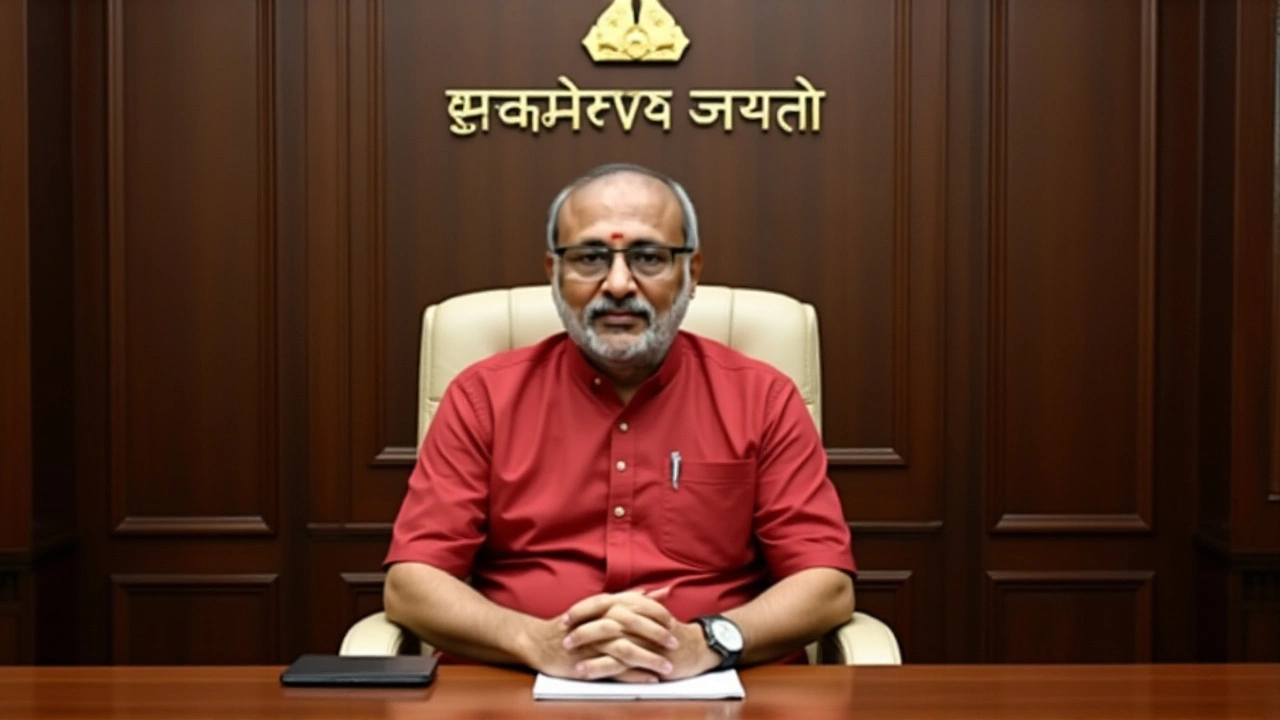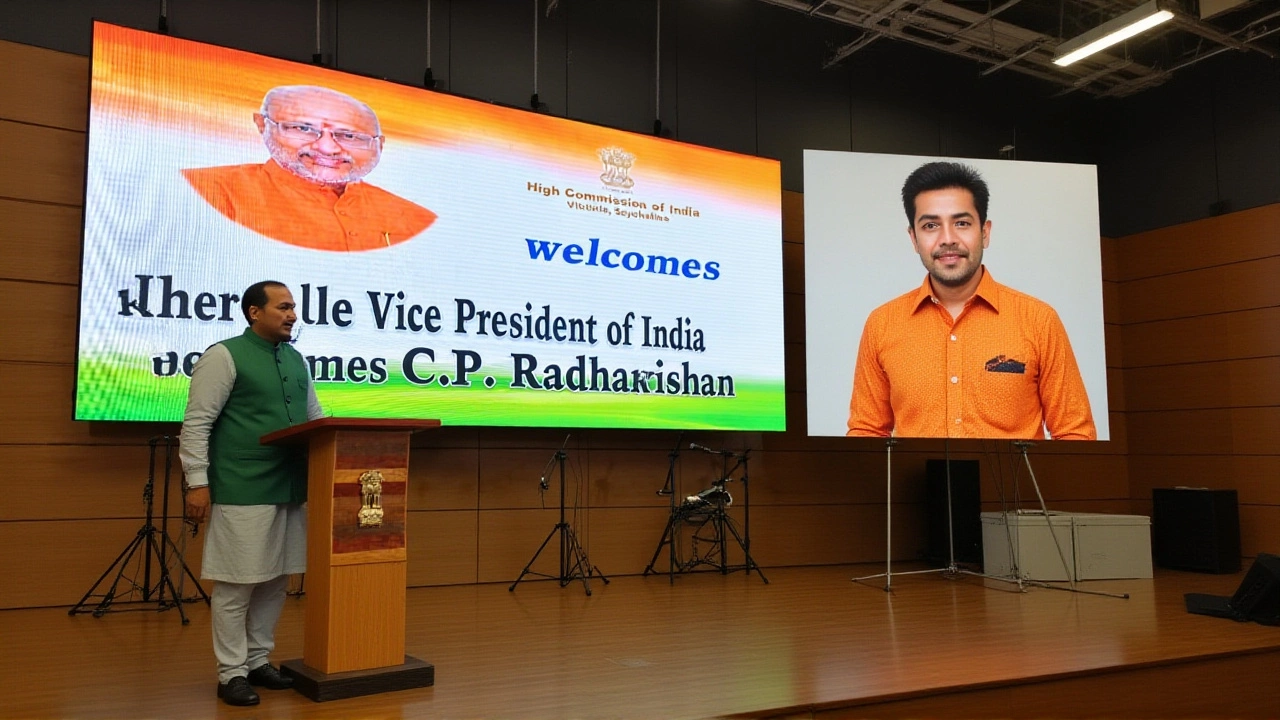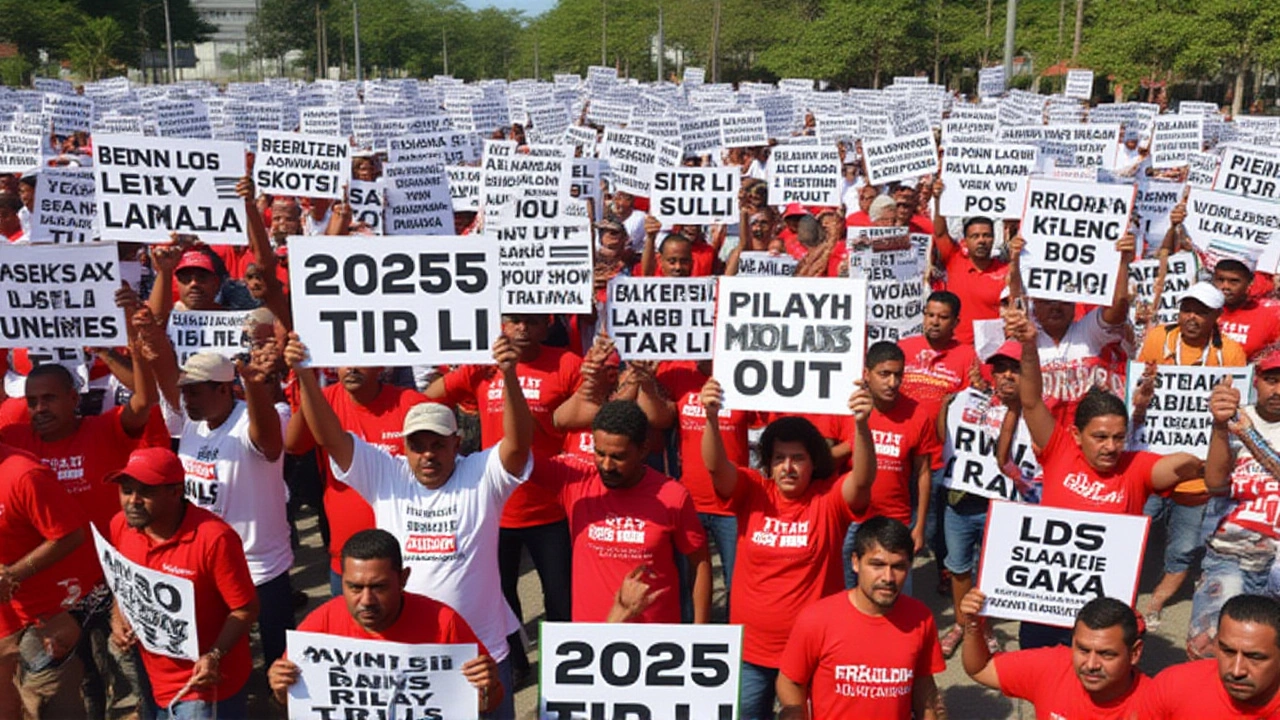India deepens Indian Ocean ties as VP Radhakrishnan visits Seychelles ahead of 50th anniversary

When C. P. Radhakrishnan stepped off the plane in Victoria on October 26, 2025, he wasn’t just attending a ceremony — he was laying the groundwork for the next chapter in one of the Indian Ocean’s most quietly powerful partnerships. The Vice President of India was there to witness the swearing-in of Dr. Patrick Herminie as Seychelles’ new president, but the real story unfolded in the quiet, deliberate conversations that followed — conversations about maritime security, development aid, and a shared vision for a region that carries nearly 80% of the world’s oil shipments.
A Bond Rooted in Time and Tide
The visit wasn’t ceremonial fluff. It was strategic. Seychelles, a chain of 115 islands scattered across the western Indian Ocean, sits like a sentinel between Africa and Asia. For India, it’s not just a friendly neighbor — it’s a lifeline. With China expanding its naval footprint in Djibouti and global shipping lanes growing more contested, Seychelles’ Exclusive Economic Zone (EEZ) offers India a critical vantage point. And for years, India has been quietly investing in that partnership: training Seychelles’ coast guard, donating offshore patrol vessels, sharing satellite intelligence, and conducting joint patrols that have turned a modest bilateral relationship into a functioning maritime alliance. The timing couldn’t be more symbolic. Next year, 2026, marks two milestones: the 50th anniversary of Seychelles’ independence and the 50th anniversary of diplomatic ties with India. India’s Ministry of External Affairs made it clear in its October 28 statement: “We are confident that the relationship will be taken to greater heights.” That’s not diplomatic boilerplate. It’s a promise.The Meeting That Mattered
On October 27, at 2:53 PM IST, C. P. Radhakrishnan met Dr. Patrick Herminie at the State House. The tone was warm but purposeful. Radhakrishnan conveyed Prime Minister Narendra Modi’s personal invitation for Herminie to visit India — a gesture rich with political weight. In return, he underscored India’s willingness to expand cooperation across health, education, energy, transport, and — most critically — maritime security. He didn’t just mention Vision MAHASAGAR; he made it the centerpiece. Launched under Modi’s leadership, MAHASAGAR isn’t just a slogan. It’s India’s framework for security and growth across the Global South, especially in the Indian Ocean. Seychelles, with its small population but outsized strategic value, is a key node in that network. Radhakrishnan’s words signaled that India sees Seychelles not as a recipient of aid, but as an equal partner in regional stability. The visit also included a meeting with Seychelles Vice President-elect H.E. Mr. Sebastien Pillay — a sign India is building relationships across the entire political spectrum. And in a subtle but telling move, Radhakrishnan also met with Dr. Navinchandra Ramgoolam, Prime Minister of Mauritius, underscoring India’s broader regional calculus. This wasn’t just about one island nation. It was about anchoring influence across the Western Indian Ocean.
Why This Matters Beyond the Islands
Look at the map. The Indian Ocean isn’t just water. It’s commerce. It’s energy. It’s power. Over 80% of global oil shipments pass through its waters — much of it through chokepoints near the Horn of Africa and the Malacca Strait. For India, which imports over 85% of its oil, securing these routes isn’t optional. It’s existential. Seychelles’ location, just south of the equator and west of the Maldives, gives it unparalleled access to monitor shipping lanes, detect illicit trafficking, and respond to piracy or sabotage. India’s support — from radar systems to training programs — has turned Seychelles into a force multiplier. And now, with the new administration in place, India is betting that this partnership will deepen. There’s also the soft power angle. The Indian diaspora in Seychelles — estimated at over 8,000 people — has long been a cultural bridge. Radhakrishnan’s address to the community wasn’t just a speech. It was a reaffirmation of identity, history, and belonging. “You are not just Indians living abroad,” he reportedly told them. “You are the living link between two nations.”What Comes Next?
The invitation for President Herminie to visit India is the clearest signal yet. When he comes — likely in early 2026 — expect announcements on new infrastructure projects, expanded defense cooperation, and perhaps even a joint declaration on maritime domain awareness. India may also offer more scholarships for Seychellois students, expand telemedicine links, and support renewable energy transitions on the islands. And if the past is any guide, these aren’t one-off gestures. India has a long track record of incremental, persistent engagement — no grand announcements, no headlines screaming “new alliance.” Just steady, reliable support. That’s the Indian way. And it’s working.
Behind the Scenes: The Strategic Chessboard
While Western powers focus on the Pacific, India is quietly building a network in the Indian Ocean — from Mauritius to Madagascar, from Sri Lanka to the Maldives. Seychelles is a linchpin. Unlike Djibouti, where China’s base is visible and militarized, India’s presence in Seychelles is subtle: coast guard stations, surveillance aircraft, training modules. It’s partnership, not occupation. And that’s precisely why it endures. The U.S. and France still maintain military interests in the region, but India’s approach — rooted in historical ties, cultural affinity, and non-interference — resonates differently. When a small island nation chooses to deepen ties with India over more aggressive powers, it says something profound.Frequently Asked Questions
How does India’s cooperation with Seychelles impact global shipping security?
India’s support — including patrol vessels, radar systems, and coast guard training — helps Seychelles monitor its 1.4 million sq km Exclusive Economic Zone, a critical corridor for 80% of global oil shipments. Joint patrols reduce piracy risks and enhance early detection of suspicious vessels, directly contributing to the safety of trade routes between the Middle East and Asia.
Why is Vision MAHASAGAR important to this relationship?
Vision MAHASAGAR is India’s strategic framework for security and sustainable growth across the Indian Ocean region. By tying Seychelles’ development priorities — like maritime security and renewable energy — to this vision, India positions itself as a long-term partner, not just a donor. It’s a counterbalance to China’s more transactional approach in the region.
What role does the Indian diaspora play in India-Seychelles ties?
The Indian community in Seychelles, numbering around 8,000, has been instrumental in cultural, educational, and economic exchanges for generations. They’ve helped maintain language, religious traditions, and business networks that serve as informal diplomatic channels — strengthening trust and mutual understanding between the two nations at the grassroots level.
What might President Herminie’s visit to India include?
Expect announcements on expanded defense cooperation, including potential upgrades to Seychelles’ surveillance capabilities, new scholarships for students, renewable energy projects like solar microgrids on outer islands, and possibly a bilateral maritime security agreement. The visit will likely be timed to coincide with the 50th anniversary celebrations in 2026.
How does this visit compare to previous Indian engagements in the Indian Ocean?
Unlike past visits that focused on symbolic gestures, this one was operationally dense: meetings with both heads of state, the diaspora, and a neighboring leader (Mauritius). It reflects India’s shift from ceremonial diplomacy to strategic integration — building layered, sustainable partnerships rather than one-off events.
Is China’s presence in the region a direct threat to India’s interests?
China’s base in Djibouti, 1,500 km from Seychelles, is a strategic concern, but not an immediate threat. India’s strength lies in its non-militarized, trust-based partnerships. While China offers loans and infrastructure, India offers training, equipment, and long-term reliability — a difference Seychelles has consistently chosen.